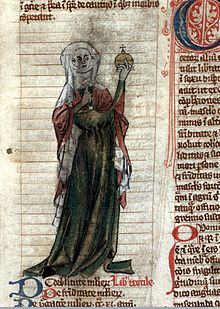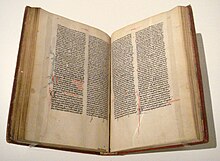

Trotula is a name referring to a group of three texts on women's medicine that were composed in the southern Italian port town of Salerno in the 12th century. The name derives from a historic female figure, Trota of Salerno, a physician and medical writer who was associated with one of the three texts. However, "Trotula" came to be understood as a real person in the Middle Ages and because the so-called Trotula texts circulated widely throughout medieval Europe, from Spain to Poland, and Sicily to Ireland, "Trotula" has historic importance in "her" own right.[1]
- ^ Monica H. Green, ed. and trans. The ‘Trotula’: A Medieval Compendium of Women’s Medicine (Philadelphia: University of Pennsylvania Press, 2001).